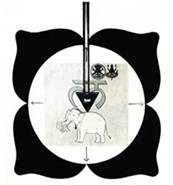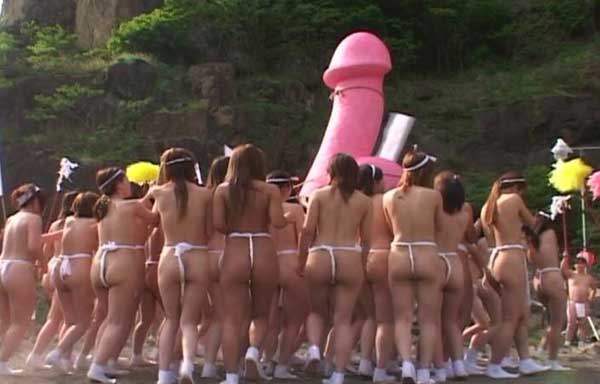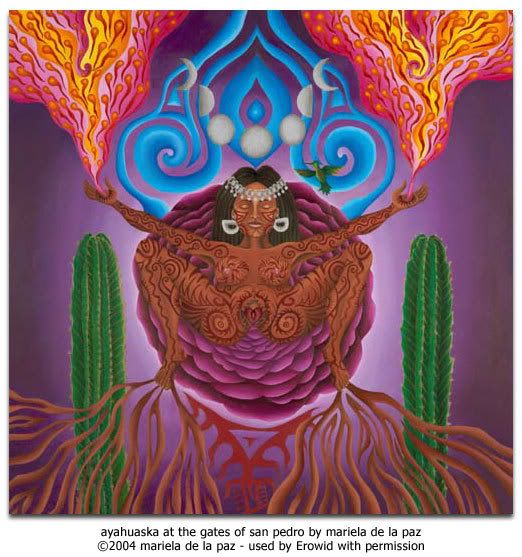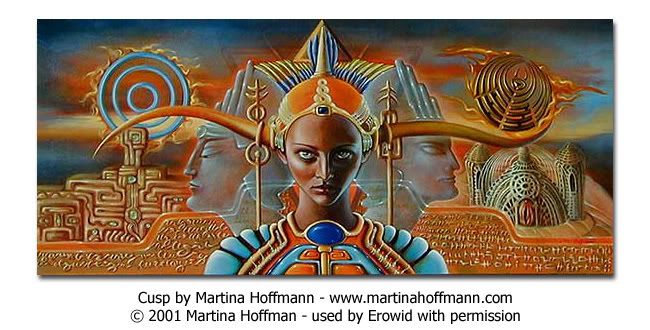http://www.blameitonthemoon.com/Potions/Beltane_Love_Potion/beltane_love_potion.html

Poção de Beltane
Cultos e Iniciações
http://www.sacred-texts.com/sex/asw/index.htm
http://thegreatrite.org/TheGreatRite/human_body_energetics_love_sexuality.aspx
Procissões fálicos, ou Parade Penis
Festival Kamanara Matsuri (Falo de Aço)
Culto Xintoísta
Lenda da "Vagina Dentada" como origem mítica do Falo de Aço.
Mistérios Dionisíacos
Derivados dos cultos primitivos da Tracia, Frigia- Mediterrâneo.
Fe
Em Tyrnavos, ocorre na primeira segunda feira da Quaresma (culto fálico).
Famoso prato é a sopa de espinafre "bourani"
Dyonisia
Lenaia: "Lenaia" provavelmente vem de "lenai", que é outro nome para Mênades (as adoradoras de Dionísio)
Utilização de hidromel, enteógenos, vinho.
Beltane
http://earthwitchery.com/beltane.html
Ritual Sexual
http://en.wikipedia.org/wiki/Sexual_ritual
Ritual da Fertilidade http://en.wikipedia.org/wiki/Fertility_rite
List of fertility deities http://en.wikipedia.org/wiki/List_of_fertility_deities
Festival of the Steel Phallus: Kamanara Matsuri, Honen Matsuri
Shivalingan
Maha Shivratri (Festival)
---------------------------------------------------------------------------------------------------------------
Yoni Worship
The Divine Goddess as an altar with her vulva prominent.
This design is clearly for ritual worship; you can see where the libations of the sacred oils will collect and run out at the junction of the vulva and rim. Stone carving, Alampur Museum, Hyberbad State, 8th century.
From the Sixty-Four-Yogini temple at Bheragat.
Madhya Pradesh, 12th century.
Yoni Tantra, worship of the Yoni
Yoni Puja and Healing - invoking the Goddess
http://www.thetantrictouch.com/yoni-puja-the-ritual-worship-of-the-the-yoni/
http://www.tantrasadhana.com/2011/05/tantra-yoni-puja-%E2%80%93-worship-of-the-sacred-feminine/
Yoni Puja (Festival)
Yoni Puja: Celebrating Goddess, Women, Creation & The Feminine

-----------------------------------------------------------------------------------------------------------------------------
The Muladhara Cakra
----------------------------------------------------------------------------------

Versículo 4
“Agora, chegamos ao Centro Fundamental. Está junto à entrada da espinha dorsal e está colocado abaixo dos genitais e acima do ânus. Tem quatro pétalas encarnadas. Sua cabeça ou entrada pende para baixo. Sobre as pétalas estão as quatro letras de Va a Sa,, de cor ouro brilhante.”ComentárioO Centro Fundamental é chamado pelos hindus de Adhara-lotus ou Muladhara-chakra.
Muladhara quer dizer raiz, princípio.
Adhara significa princípio absoluto. Também quer dizer extremidade da coluna vertebral.
Vê-se que este centro é aquele que está mais em contato com os órgãos geradores porque está colocado abaixo dos genitais a acima do ânus.
Os hindus, ao dizerem no texto que tem quatro pétalas encarnadas, referem-se à glande. E, quando dizem que a entrada pende para baixo, referem-se ao falo em estado de relaxação.
As quatro letras Va, Sha, Sha e Sa, que estão sobre as quatro pétalas, dão a entender que este centro é aquele que dá a energia transmutável. Porque o quatro simboliza o poder material e a vocalização destas letras é a energia desse poder.
Versículo 5
“Neste centro está a quadrada região do elemento terra, rodeada de oito lanças brilhantes. É de uma cor amarelada brilhante e bela como um relâmpago, como o é também a semente do elemento terrestre que está dentro, no centro.”ComentárioNeste centro têm origem todos os átomos físicos, porque em sua área radica Prithivi, o elemento terrestre. A cor deste elemento é o amarelo e sua forma é quadrada porque sua vibração é lenta e pesada.
Os hindus chamam a terra de Bhumi, o Centro Fundamental ou Muladhara da terra, Chakra Adhara-Bhumi, o elemento terrestre Prithivi e a semente do elemento terrestre, Bhija de Dhara. Os hindus chamam também a semente do elemento terrestre de Indra, Deus da terra, porque costumam materializar e divinizar os poderes fundamentais com estas figuras.
As oito lanças brilhantes que rodeiam a região de Prithivi indicam a lentidão da vibração que este centro emite e sua função densificadora da matéria.
Este centro nunca está em descanso completo, pois se assim fosse, não haveria vida. Está em descanso quando emite tão somente a força necessária para manter a vida material, aquela força do Grande Elemento que sobe pelos cordões simpáticos.
Move-se positiva ou negativamente quando gera força suplementar e não somente a necessária para a vida material, ou seja, quando há superprodução de energia.
... >>>>>>
“Agora, chegamos ao Centro Fundamental. Está junto à entrada da espinha dorsal e está colocado abaixo dos genitais e acima do ânus. Tem quatro pétalas encarnadas. Sua cabeça ou entrada pende para baixo. Sobre as pétalas estão as quatro letras de Va a Sa,, de cor ouro brilhante.”ComentárioO Centro Fundamental é chamado pelos hindus de Adhara-lotus ou Muladhara-chakra.
Muladhara quer dizer raiz, princípio.
Adhara significa princípio absoluto. Também quer dizer extremidade da coluna vertebral.
Vê-se que este centro é aquele que está mais em contato com os órgãos geradores porque está colocado abaixo dos genitais a acima do ânus.
Os hindus, ao dizerem no texto que tem quatro pétalas encarnadas, referem-se à glande. E, quando dizem que a entrada pende para baixo, referem-se ao falo em estado de relaxação.
As quatro letras Va, Sha, Sha e Sa, que estão sobre as quatro pétalas, dão a entender que este centro é aquele que dá a energia transmutável. Porque o quatro simboliza o poder material e a vocalização destas letras é a energia desse poder.
Versículo 5
“Neste centro está a quadrada região do elemento terra, rodeada de oito lanças brilhantes. É de uma cor amarelada brilhante e bela como um relâmpago, como o é também a semente do elemento terrestre que está dentro, no centro.”ComentárioNeste centro têm origem todos os átomos físicos, porque em sua área radica Prithivi, o elemento terrestre. A cor deste elemento é o amarelo e sua forma é quadrada porque sua vibração é lenta e pesada.
Os hindus chamam a terra de Bhumi, o Centro Fundamental ou Muladhara da terra, Chakra Adhara-Bhumi, o elemento terrestre Prithivi e a semente do elemento terrestre, Bhija de Dhara. Os hindus chamam também a semente do elemento terrestre de Indra, Deus da terra, porque costumam materializar e divinizar os poderes fundamentais com estas figuras.
As oito lanças brilhantes que rodeiam a região de Prithivi indicam a lentidão da vibração que este centro emite e sua função densificadora da matéria.
Este centro nunca está em descanso completo, pois se assim fosse, não haveria vida. Está em descanso quando emite tão somente a força necessária para manter a vida material, aquela força do Grande Elemento que sobe pelos cordões simpáticos.
Move-se positiva ou negativamente quando gera força suplementar e não somente a necessária para a vida material, ou seja, quando há superprodução de energia.
... >>>>>>
----------------------------------------------------------------
-------------------------------------------------------------------------------------
Nude Yoga
pundai yoga, shanti yoga, shanthi yoga, kamini yoga, ushath yoga, Yoni Yoga, yoni puja, and Linga YogaProcissões Fálicas, ou Parade Penis
Fe
Ritos Eleusinos
"Lenaia" provavelmente vem de "lenai", que é outro nome para Mênades (as adoradoras de Dionísio)
Na tradição celta, os dois maiores festivais do ano solar são Samhain e Beltane, as celebrações da morte e do renascimento, respectivamente.
List of fertility deities http://en.wikipedia.org/wiki/List_of_fertility_deities
Maithuna ou Mithuna é um termo do sânscritoTantra na maioria das vezes traduzido como união sexual em um contexto ritualista[1]. É o mais importante dos cinco makara e constitui a parte principal do Grande ritual do Tantra também conhecido como Panchamakara, Panchatattva e Tattva Chakra.
-------------------------------------------------------------------------
The Art of Sexual Ecstasy
http://www.margotanand.com/
-------------------------------------------
O culto de Dionísio
Mistérios Eleusinos
Leitura Recomendada
The Ananga Ranga Translated by Sir Richard Burton1885]
An important work of Indian erotology. This book was written by the Indian poet Kalyan Mall much later than the Kama Sutra, in the sixteenth century A.D. This translation was published by the Kama Shastra Society in 1885.
Hidden intercourse: eros and sexuality in the history of Western esotericism
Wouter J. Hanegraaff,Jeffrey Kripal,Jeffrey John KripalThe Waste Land
T. S. Eliot
Goddess of Spring
http://www.sacred-texts.com/sex/ar/ar08.htm
Segredos da Índia
http://www.sacred-texts.com/sex/index.htm Other texts about

Onde ir:
http://cariferraro.com/2010/05/01/beltane-at-the-baylands-2010/
http://www.mauritius-seychelles.com/desroches-island-resort-hotel-seychelles.php
http://www.desroches-island.com/
O que usar:
four-poster bed
enteogens
parfums and essences
incenses
*Para dar o clima:
velas: vermelhas rosas amarelas marrons dourada
aromatizantes: jasmim, sândalo, ?
decoração erótica (Yonni Linghan)
óleos (pimenta, limão, menta e afrodisíacos)
*O que fazer:
Banho de Banheira com sais e óleos estimulantes
Massagem Tântrica com óleos apropriados
It’s time for the honey pour.Five gallons of golden sweetness is rolled out of storage, the funnel set in place, and the thick, rich nectar begins to fall.
This is the stuff of local flowers. Our friends down the street have an apiary. The tropical flora here is plentiful and these bees are inspired. This five gallons is a small portion of the fruit of their labor.
Jeb holds the funnel while Mary pours. But I know what he’s waiting for. And when she’s done gifting me with a gallon of flower power, he lifts the dripping funnel to his mouth and lets the sticky sweet roll down his chin.
“This was harvested May 1st,” Mary says.
http://forthearchives.wordpress.com/2011/07/19/beltane-honey/
http://ficadikaok.blogspot.com/2011/04/beltane-comemore-o-amor.html
http://mysticalredings.blogspot.com/2009/07/truth-is-awareness.html
Great site about Kali Mistery
http://www.flickr.com/photos/richard_milnes/3490224105/
http://www.myspace.com/wendyrule Music
http://www.4shared.com/get/FM0_F4Xg/Aziza_Mustafa_Zadeh_1995_AZERB.html
http://www.ashram.com.au/
Dualismo cerebral
Preparing for Beltane ~
by Elizabeth Barrette
Beltane is a traditional Pagan sabbat celebrated by many people today. It spans the night of April 31 (May Eve) and the day of May 1 (May Day). Other names include Roodmas and Walpurgisnacht. The many themes associated with Beltane can give you ideas for planning a ritual or gathering. Good books include Beltane: Springtime Rituals, Lore and Celebration and Celebrating the Seasons of Life: Beltane to Mabon. For seasonal music, consider Beltane: Songs for the Green Time or From Imbolc to Beltane.The Rites of Spring
Beltane marks the beginning of the “light half” of the year, when the days are long and bright and warm. This is the height of spring, bursting with flowers and the first new foods such as asparagus. As a seasonal celebration, Beltane is all about life busy with creation and full of exuberance.
Decorate the altar with seasonal flowers such as lilacs, hawthorn, and apple blossoms. Include images of animals associated with spring, such as robins and calves. Use spring colors such as green, yellow, sky blue, and lavender. Plan to hold your ritual outdoors if possible — but include a backup site indoors in case of rain.
Protection and Purification
Ancient Celtic tribes used to bring their cattle out of the winter barns at Beltane. Cattle were driven between two huge balefires for purification and protection, before they were released into the summer pastures. Other customs for purification involved birching and picking insecticidal herbs. This was also a popular time for spring cleaning.
To focus on this aspect of Beltane, host a work day for cleaning your covenstead or do some other collective project to clean and refresh your surroundings. Take a bath or sauna for purification. Build a pair of balefires (far enough apart for safety) and lead a line dance between them. Rue, tansy, pennyroyal, and other purifying herbs are appropriate.
Fire Festival
As mentioned above, balefires formed a major part of historic Beltane celebrations. Other fires in the community would be extinguished and relit from the balefires. People also celebrated the growing power of the sun. Belenos the Shining One was honored at this time.
Today, Beltane is often celebrated as a fire festival with bonfires, marshmallow and weiner roasts, burning effigies, fire dancers, and other excitement. Design your ritual around a bonfire; appoint a Fire Keeper to manage the fire and a Water Bearer to supervise safety. For an indoor ceremony, use masses of yellow candles. Thistle, dragon’s blood, hawthorn, and fireweed all relate to fire.
Courtship and Romance
Beltane was a time when young, single people could meet, flirt, and discover potential mates. Games of physical prowess and mental acuity allowed people to show off in front of others. Gifts of sweets and flowers were popular favors. Women would rise early to wash their faces in May morning dew for beauty.
A large Pagan community might benefit from hosting a singles event for Beltane. What better opportunity to meet other Pagans who are open to new relationships? Include icebreaker games, high-action contests, low-action contests, a dance, and some quiet interludes. Performances of love songs, love poems, and scenes from romantic plays are popular. It may be prudent to provide a basket of condoms in case of need. Sweet (rose, jasmine, ylang ylang) or sexy (musk, patchouli) incenses or oils are ideal.
Fertility Festival
As a fertility festival, Beltane encourages the crops to grow and the animals and people to produce new life. The famous May Pole is a phallic symbol and the dancing raises power. Flowers and romantic foods add to the mood.
For someone wishing to conceive, Beltane is an ideal time to hold a real old-time fertility ritual as May Queen and May King. (It’s okay if the choice of partners is a foregone conclusion.) Erect a May Pole and dance around it. Sweet woodruff, strawberries, and white wine or mead are traditional for Maybowl ingredients. Celebrate your bodies and their power. Body painting, purifying baths, and making love outdoors are all popular. Ideally, at least part of the activities should be done skyclad.
The Sacred Marriage
As above, so below: people associate Beltane with love and sexuality because it’s considered the time when the God and the Goddess come together. The God may appear as Bel, Cernunnos, or Jack-in-the-Green. The Goddess may appear as Flora, Maia, or Danu. Sometimes their human representatives are chosen by lot, other times planned. People often dress up, including a masquerade and procession as part of the festivities.
This theme is especially appropriate for covens led by a High Priest and High Priestess who are married. Sometimes it is performed by a couple who are about to get married. They serve as human vessels for the God and the Goddess, in a symbolic (or in private, sometimes literal) performance of their divine union.
Spirits and Faeries
On certain nights, faeries and spirits roam the world. Beltane is one time famed for faery rades and the Wild Hunt. Ghosts and other spirits are also believed to travel freely on this night. Some practices were aimed at attracting these visitors, most at driving them away.
To celebrate the ethereal aspects of Beltane, consider creating a faery garden with plenty of things that sparkle and jingle, and plants beloved by faeries. The traditional faery color is green, but they adore most bright colors. Snapdragon, meadowsweet, hawthorn, and foxglove are good altar flowers.
To protect against unwanted entities, see the previous section on purification and protection; but also add that salt, iron, and the making of much noise are traditional for Beltane defenses. Plan for an indoor observance in this case.
http://gaiatribe.geekuniversalis.com/2009/04/15/preparing-for-beltane/
Beltane the Smith
Por Jeffery Farnol- livro Ophiolatreia- SNAKE WORSHIP





























